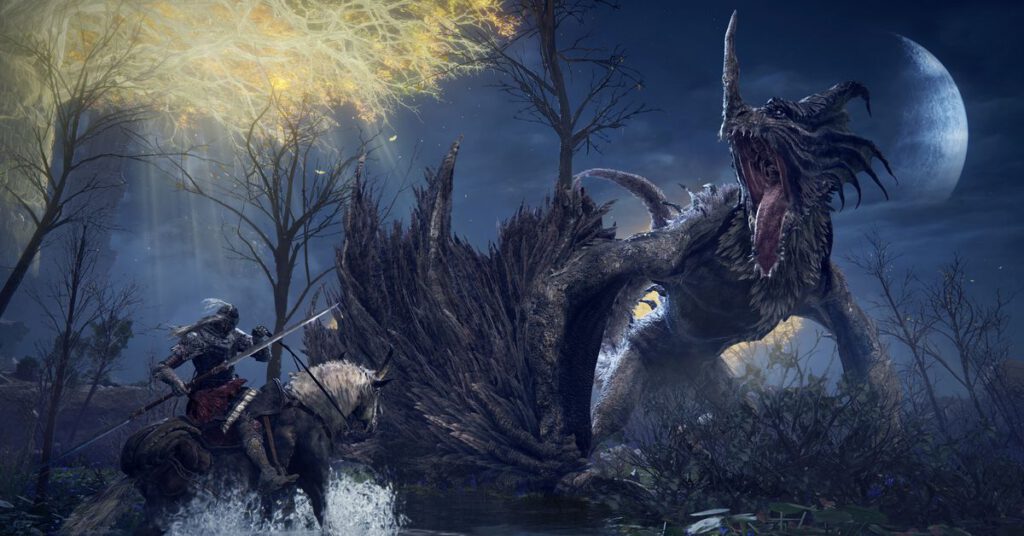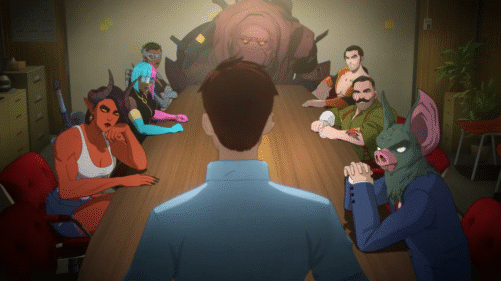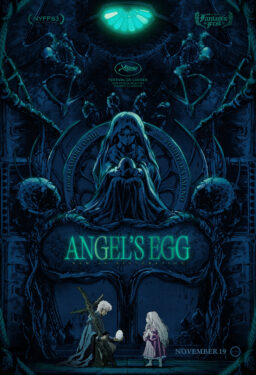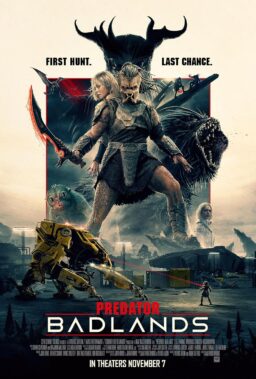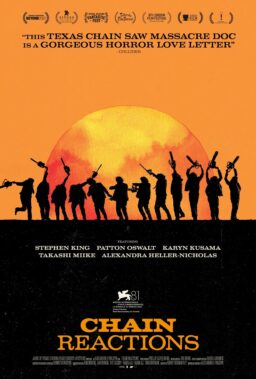From Software’s “Elden Ring” has already ruined so many lives. The people behind the historically brutal “Dark Souls” games released their latest adventure in late February, and I have spent dozens of hours over the last month exploring its lands, vanquishing its enemies, and dying over and over and over again. That’s kind of the contract you sign with a From game. Even with all that death, the entire time has been spent in a state of awe over what this game attempts and accomplishes. This review would normally have been timed closer to release, but this is the kind of game that demands an incredible commitment, and so I have spent more time on this journey than any other video game review on this site, and I have thousands of miles to go before I sleep. And yet it’s still incredibly hard to capture in words the wonder of playing “Elden Ring.” It owes a great deal to fantasy films, literature, and games of the past, but it also creates its own massive, breathtaking world and mythology. Every time you play it, you find something new, something hidden behind a rock or down in a valley—and most of the time it wants to kill you.
“Elden Ring” was directed by the genius Hidetaka Miyazaki, the man behind the “Souls” games, and it was written in collaboration with the legend George R. R. Martin, the man behind “Game of Thrones,” who reportedly provided world-building documents that Miyazaki and his team worked from to create their own story. Both gentlemen—and many others involved in the game’s production—have ignored the linear storytelling of most games, even the ones that call themselves open-world. Most such games are often “open” in structure only, pushing you through a story embedded in its “main missions” while the “side missions” are there to pad game time or help build up your character. “Elden Ring” is so open that you often have no idea where to go next or what to do when you get there. It’s a game that encourages exploration like none I’ve ever seen. It has echoes of the great “The Legend of Zelda: Breath of the Wild” in a sense in that the Nintendo hit also allowed players to travel freely across its landscape, but this one is a bit more terrifying. (See image below for one of many examples…)

Now, there’s still a story, it’s just one you’re allowed to find on your own. These games have never held your hand, but the freedom of gameplay in “Elden Ring” is revolutionary, truly dropping players into a massive fantasy world and allowing you to map your own narrative within it. You are one of the Tarnished, an exile from a place called the Lands Between, which has been cast into violent chaos since the destruction of something called the Elden Ring. The progeny of a vicious ruler named Marika the Eternal have taken shards of the ring, leading you, a lowly Tarnished, to find the Great Runes and restore the power of the Ring yourself.
The structure of “Elden Ring” will be very familiar to anyone who has played a “Dark Souls” game (or even “Bloodborne”) in that you control a very weak, almost skill-less being at the beginning of the narrative. You can choose from different character types, and what will be a deeply customizable experience unfolds from the very beginning. You can chart your development in very different ways, prioritizing attributes that turn you into a strong warrior or a powerful sorcerer. As you battle enemies in the Lands Between, you earn something called Runes—which can be used to level up, buy gear, and upgrade materials (with other items found in the wild)—but are lost with death, giving you one chance to reclaim them from the spot where you fell or lose them forever. “Elden Ring” demands an incredible amount of collecting items from enemies, down in dungeons, and in the wild, that can then be used to craft weapons, improve your build, or upgrade. I have so much stuff in my inventory that I have no idea what half of it does. Sometimes it’s a matter of finding the right “cookbook” to be able to craft specific combinations; sometimes their use will be revealed later in the game; sometimes I think it’s just junk, but I’m always excited when I find something new.

The combat in “Elden Ring” will be familiar to “Souls” players. It relies heavily on more than just button-mashing, requiring players to dodge, parry, and consider the patterns and techniques of an enemy to vanquish them. For bosses, some of whom are legitimately terrifying and just brilliantly designed in terms of art, the player can call in assistance from other gamers or NPCs (a technique I highly recommend—don’t think you can survive all of this game alone). Speaking of NPCs, many of the ones you will encounter in this game have their own rich plotlines, often giving the player what could be considered side quests—things to find or characters to rescue—that then open up other narrative aspects and even physical sections of the map. It’s another aspect of the storytelling here that makes the player more active than a traditional game in that you don’t just go somewhere and have the story progress in front of you as much as become a part of this fantasy universe, impacting the people who are already stuck in the Lands Between as you try to save it. These subplots are richly drawn (and sometimes darkly humorous), adding to the sense that you are merely a visitor in this massive world.
The main question around “Elden Ring” was if this was the game to woo those who never took to the notoriously difficult “Dark Souls” games. I think it can be for people with patience. For the first few hours, especially once one gets to the first real boss, it can be punishing. But embrace what this game is really about: exploration. Ride your horse Torrent over that hill and see what’s on the other side. Kill that giant creature you didn’t think you could kill and see what you get for your trouble. Head down into that dungeon and pray you make it out again. It’s a new standard bearer in the world of fantasy action games, one that consistently surprises, challenges, and enthralls the gamer, allowing the real world to fall away as you cross the Lands Between, knowing hundreds of deaths await you … but so does victory.
A review copy was provided on PS5.

